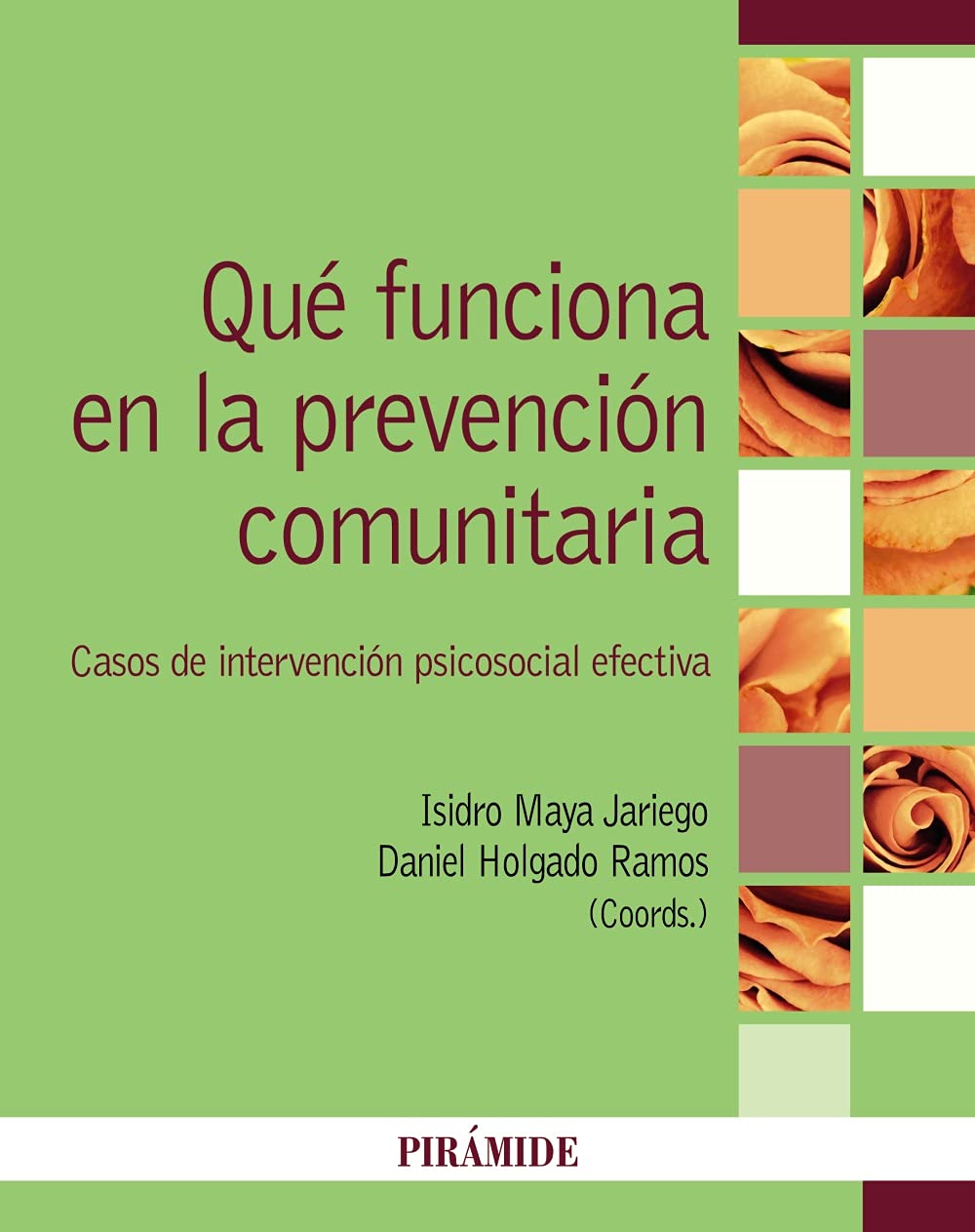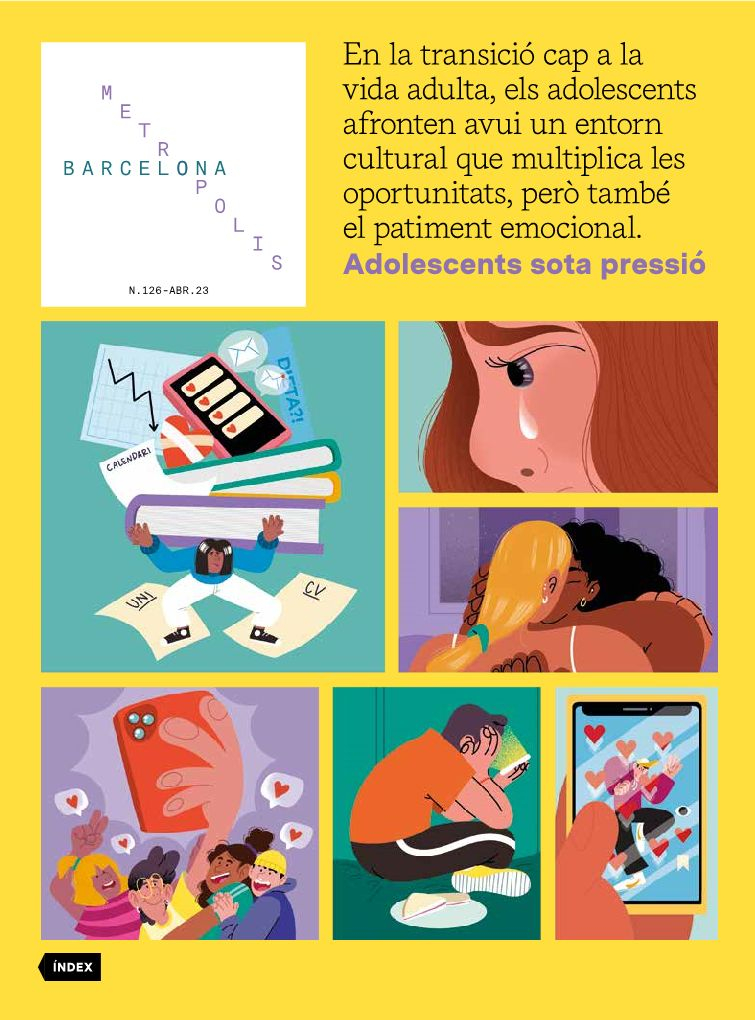The transformative power of volunteering in adolescence
- Dossier
- Apr 23
- 7 mins

Experiences of community involvement during childhood and adolescence bear a positive impact on psychological wellbeing and contribute to the development of active citizenship. In a particularly critical developmental period, altruistic behaviour habits are established, personal networks are diversified and contact is made with adults who can act as informal mentors.
From the age of seven, Sara started going on field trips with her local scout group. Her mother had told her about the benefits of direct contact with nature and encouraged her to join. However, Sara did not expect it to be so much fun. She came back from every outing to the Oromana pine forest or to the Sierra Norte mountains full of enthusiasm. The Beaver Scouts group spent most of their time playing games, singing songs and doing outdoor activities. Although she enjoyed camping the most, she also took part in a number of educational outings and joined several volunteering initiatives. On the first Saturday of every month, she would spend the afternoon with the elderly in a nursing home. Then she started to attend the annual tree planting initiative organised by a local environmental association. She also volunteered with the Food Bank collection campaign on two occasions. Now thirteen years old, she has a strong sense of belonging to the scout movement, which many of her friends are also part of.
Experiences of community involvement during childhood and adolescence bear a positive impact on psychological wellbeing and contribute to the development of active citizenship. As in Sara’s case, early volunteering and community involvement practices teach children pro-social values and provide opportunities for personal skills development. Through educational activities in nature, children not only improve their knowledge of the environment, but they also learn how to cope in a group and develop empathy, social skills, the capacity to accept criticism and respect for cultural diversity. For many, it is their first experience of the world of associations, which will bear medium and long-term consequences. Participating adolescents become more autonomous, gain self-confidence and improve their capacity for self-regulation. Consequently, in a critical developmental period, altruistic behaviour habits are established and the values of tolerance and solidarity are acquired. As will be seen below, the effects may even continue into adulthood.
This article focuses on the formative and transformative value of community involvement during adolescence. It goes on to show that volunteering boosts the participants’ sense of wellbeing and is a predictor of greater civic engagement during adulthood. Moreover, it is a transformative experience thanks to which particularly useful values, knowledge and skills are acquired.
Participating in activities with a community dimension is associated with greater life satisfaction.
The benefits of volunteering
The development of personal autonomy, self-esteem and a mature identity in adolescents partly depends on having opportunities to take part in positive activities. Conversely, when they have few responsibilities or no defined social role, alienation, loneliness and poor self-concept can occur. Both volunteering and service learning have been shown to enable them to engage in meaningful activities and to play a role in helping others. They also reduce the time they spend in high-risk settings or in contexts with exposure to negative role models. Consequently, taking part in volunteering activities reduces the risk of teenage pregnancy, drug abuse and school dropout, among other social issues.
Participating in activities with a community dimension is also associated with greater life satisfaction. It not only offers adolescents the opportunity to act independently, but also allows them to develop supportive relationships with their peers or other community members. Through their involvement in civic initiatives, they diversify their personal networks, come into contact with adults who can act as informal mentors and integrate into the local environment. For example, in the case at the beginning of this article, scouting activities have a clear social component. Participants are integrated into a group where they develop friendships. They also form intergenerational networks, coming into contact with the elderly in old people’s homes or with the facilitators who provide them with educational guidance.
However, for these social and cognitive developmental benefits to be sustained over time, adolescents need to be involved on an ongoing basis. Both skills acquisition and the process of being involved often require continuity over a long period of time.
 Illustration. ©Genie Espinosa
Illustration. ©Genie EspinosaEarly experiences of community involvement during adolescence often lead to greater civic engagement in adulthood.
Learning to get involved
Adolescence is a critical time of development in which habits are established that can reverberate into adulthood. It is therefore assumed that secondary school acts as a fundamental development context for civic engagement. In secondary school, adolescents learn about themselves and others. Since it is a context that fosters trusting, learning-oriented relationships, it allows them to experiment while participating in activities that can exert an impact on the wider community. These first experiences of community involvement bring them into contact with non-governmental organisations and enhance their knowledge of volunteering opportunities. They also bring them closer to at-risk groups, which can foster greater sensitivity to social issues. Sometimes, direct involvement awakens interest in joining associations, while at the same time enhancing the perceived self-efficacy of involvement in collective action.
The result is that young people who have volunteered or have taken part in service-learning programmes are more likely to be actively involved in them during their adult lives. Specifically, early experiences of community involvement predict greater engagement in local initiatives, membership of associations, cooperation in voluntary actions or even the likelihood of voting in elections during adulthood. There is therefore a body of evidence indicating that community involvement is learned through involvement.
Volunteering as a transformative experience
Studies on volunteering generally examine the reasons that motivate volunteers to participate and get involved in aid activities. Religious values, political commitment or the pursuit of personal satisfaction and self-fulfilment are among the most common motivations. However, the transformative capacity of civic engagement and community involvement experiences has been explored to a much lesser extent.
Taking this second point of view, it is the action that determines the values, not the other way around. This means that volunteering builds social sensitivity and develops pro-social values in adolescents. This is also confirmed by previous research. Young volunteers have more positive attitudes towards society than those who do not participate. Early experiences of community involvement develop a sense of belonging along with responsibility for the community’s wellbeing.
Volunteering promotes the value of altruism. The adolescent population is the natural pool from which to ensure the generational renewal of civic engagement.
Returning to the example from the beginning, it may be assumed that helping to plant trees can lead to increased environmental awareness, as well as to attitudes that encourage responsible environmental behaviour. It can also develop skills for community action. For example, through educational activities in the scout group, young people learn how to write letters about climate change. Later, they could use these skills in the form of activism in an environmental association.
The future of community involvement
Non-governmental organisations have seen new forms of volunteering emerge in recent years in which an online form of engagement predominates, with patterns of occasional or sporadic involvement. Association leaders sometimes express concern about the growing difficulties they encounter in ensuring medium- and long-term commitment to the organisation’s mission.
In this context, the adolescent population is the natural pool from which to ensure the generational renewal of civic engagement. As shown, training in community involvement is an evidence-based practice that can prove effective not only in ensuring the continuity of volunteering, but also in fostering the values and behaviour patterns that will shape future engagement.
References
Guillaume, C., Jagers, R. and Rivas-Drake, D. “Middle school as a developmental niche for civic engagement”. American Journal of Community Psychology, vol. 6, number 3, pages 321-331. 2015.
Kuperminc, G. P., Holditch, P. T. and Allen, J. P. “Volunteering and community service in adolescence”. Adolescent Medicine, vol. 12, number 3, pages 445-457. 2001.
Lawford, H. L. and Ramey, H. L. “Predictors of Early Community Involvement: Advancing the Self and Caring for Others”. American Journal of Community Psychology, vol 59, numbers 1-2, pages 133-143. 2017.
Moorfoot, N., Leung, R. K., Toumbourou, J. W. and Catalano, R. F. “The longitudinal effects of adolescent volunteering on secondary school completion and adult volunteering”. International Journal of Developmental Science, vol 9, numbers 3-4, pages 115-123. 2015.
Smith, D. H., Stebbins, R. A. and Grotz, J. (eds.). The Palgrave handbook of volunteering, civic participation, and nonprofit associations. Palgrave Macmillan, Basingstoke, 2016.
Weiler, L., Haddock, S., Zimmerman, T. S., Krafchick, J., Henry, K. and Rudisill, S. “Benefits Derived by College Students from Mentoring At-Risk Youth in a Service-Learning Course”. American Journal of Community Psychology, vol. 52, numbers 3-4, pages 236-248. 2013.
Publicaciones recomendadas
 Qué funciona en la prevención comunitariaIsidro Maya and Daniel Holgado. Pirámide, 2021
Qué funciona en la prevención comunitariaIsidro Maya and Daniel Holgado. Pirámide, 2021
The newsletter
Subscribe to our newsletter to keep up to date with Barcelona Metròpolis' new developments




